Key takeaways:
- Firefighter training emphasizes teamwork, leadership, and resilience, preparing responders for high-stress situations.
- Community response teams are vital for effective emergency management, fostering communication and empowering individuals to act.
- Building a training program should focus on fundamental skills and incorporate real-life scenarios for practical experience.
- Selecting team members with a mix of skills and empathy enhances team dynamics and effectiveness in emergencies.
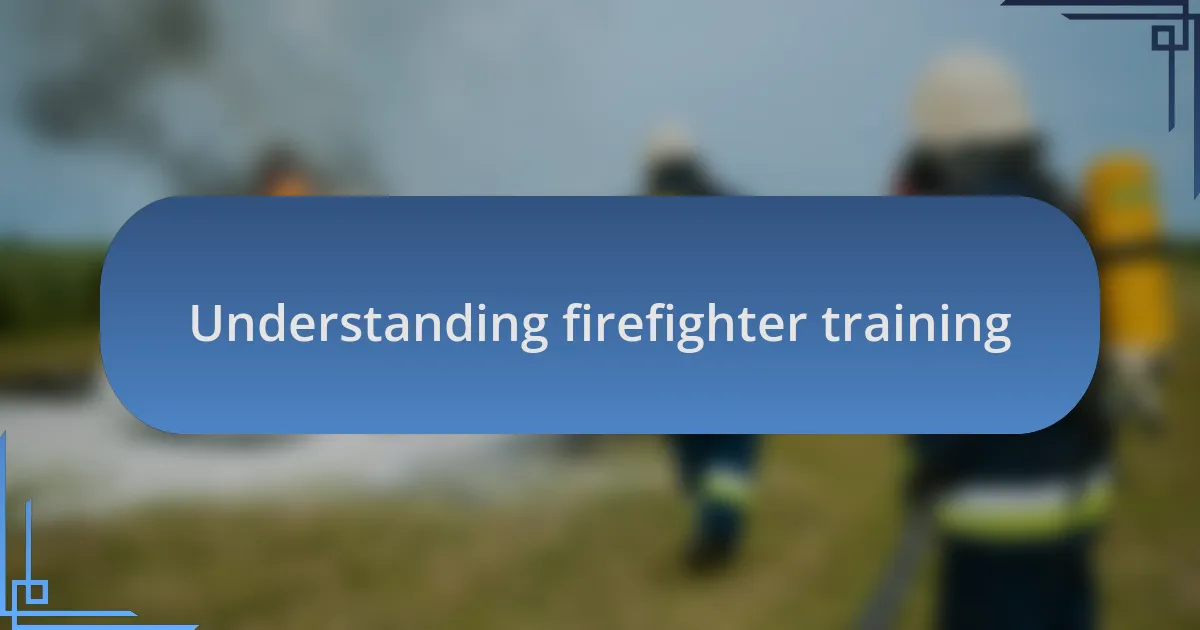
Understanding firefighter training
Firefighter training is not just about learning to put out fires; it’s a rigorous process that builds teamwork, leadership, and physical stamina. I remember my first day in training. The adrenaline rush was palpable as we raced through various drills, but what really struck me was how vital communication is during those intense moments. How can you effectively save someone if you can’t rely on your partner’s quick response?
As I progressed through my training, I encountered real-life scenarios that simulated what I’d face in the field. One particular exercise involved navigating a smoke-filled room to rescue a dummy. I felt like my heart was about to burst — it was overwhelming but revealed so much about my capabilities. Why does training focus on high-stress situations? Because stepping into the unknown is part of the job, and being prepared is the only way to confront your fears head-on.
Another critical aspect is the emotional resilience developed during training. There were times I doubted my strength, both physically and mentally. But each challenge reinforced the belief that I could push through obstacles. Reflecting on those tough moments, I have come to appreciate how essential it is to cultivate resilience in all first responders. How does one measure growth? For me, it was witnessing my own transformation from a rookie to someone who can face crises confidently, knowing that I am equipped to make a difference.
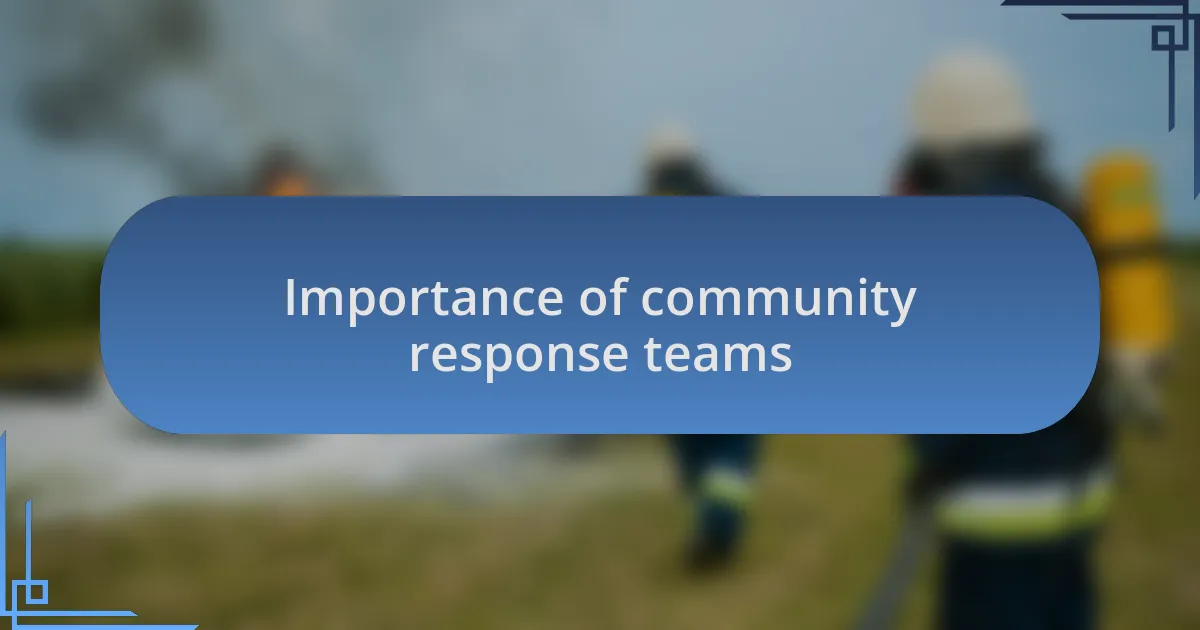
Importance of community response teams
In my experience, community response teams are the backbone of effective emergency management. I recall a situation where a local flood threatened our town. The teamwork displayed by the response team not only provided immediate assistance but also fostered a stronger bond among residents. Isn’t it incredible how working together in times of crisis can unite a community?
Communication is another vital role that community response teams play. There was a time when a wildfire broke out near our community. The way the team coordinated information, shared updates, and organized evacuations made a significant difference. It made me appreciate how critical clear messaging is during emergencies. How can you effectively prepare if everyone isn’t informed?
Moreover, these teams empower individuals to take action. I vividly remember attending a training session where team members learned basic firefighting skills and first aid. It sparked a sense of responsibility in many of us to be proactive rather than reactive. Isn’t it rewarding to know that you can contribute meaningfully when the situation demands it?
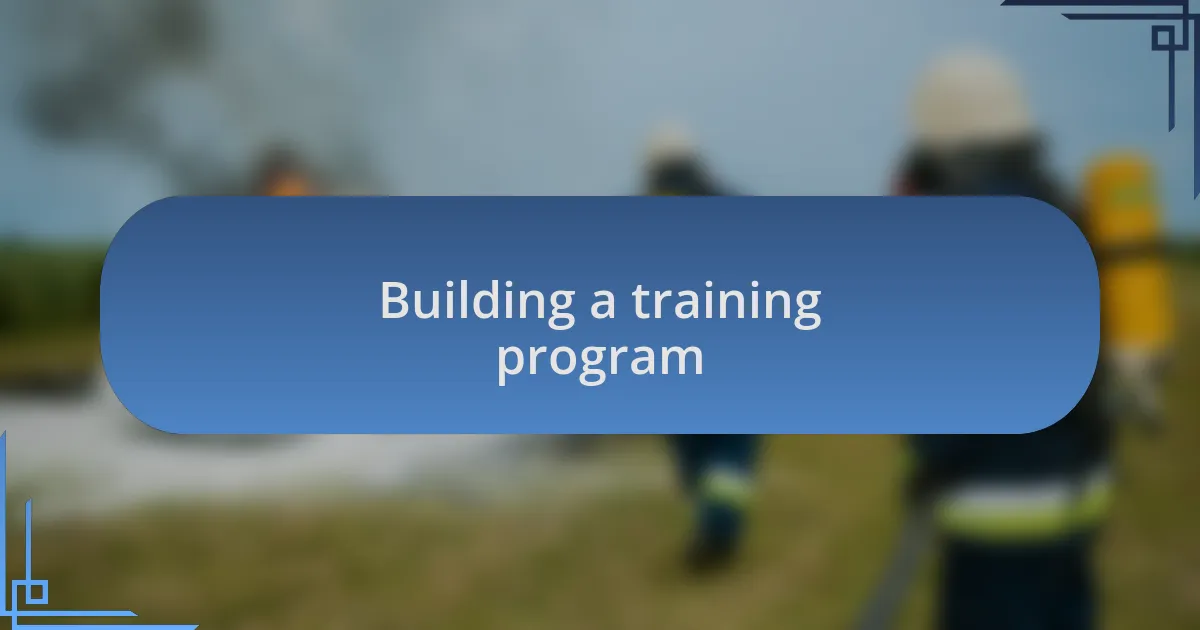
Building a training program
When building a training program for a community response team, it’s essential to start with the basics. In my experience, focusing on fundamental skills like CPR and fire safety can lay a solid foundation. I remember the first time I taught a group how to use a fire extinguisher; their faces lit up with realization that they could actually handle a small fire if it occurred. Isn’t it empowering to equip community members with the knowledge that could save lives?
As we expand the training curriculum, incorporating real-life scenarios becomes invaluable. Once, I organized a mock drill simulating a hazardous materials spill. The intensity of that day turned into a genuine learning experience—everyone had a role to play, and the sense of urgency brought out skills we didn’t know we had. How often do we get the chance to face challenges in a controlled setting where no one gets hurt?
Lastly, fostering a culture of continuous improvement is crucial for any training program. I always advocate for feedback sessions after practice drills; it allows participants to voice their thoughts and share their feelings about what worked and what didn’t. Isn’t it incredible how collective reflections can lead to richer training experiences?
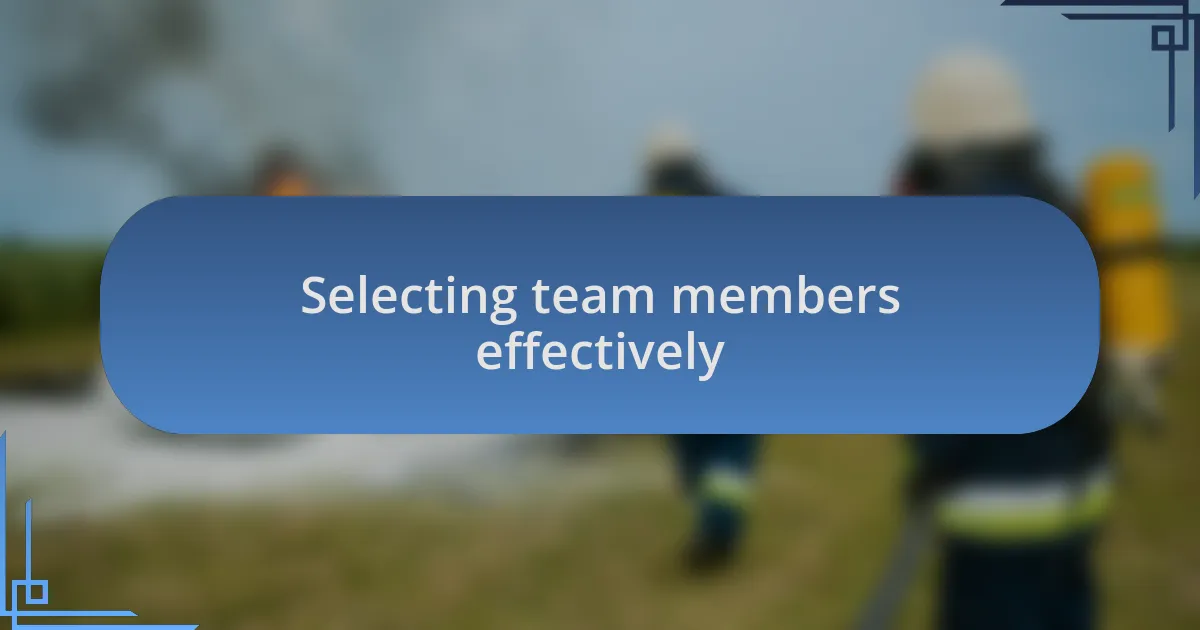
Selecting team members effectively
Selecting the right team members for your community response team needs to be a thoughtful process. In my experience, a good mix of skills and personalities ensures that the team functions well under pressure. I remember scrutinizing a list of potential members and realizing that the candidates who demonstrated not only technical skills but also a strong sense of empathy were the ones who truly resonated with the values of our mission.
I’ve found that engaging with potential team members during informal meetings can reveal so much about them. One time, I organized a casual coffee chat, and the discussions flowed naturally. I discovered that some candidates had previous experiences in crisis situations that they were eager to share; their passion was palpable. How often do we overlook the power of simple conversations to uncover hidden strengths?
Sometimes, it’s also about finding individuals who embody the spirit of collaboration. I recall an instance when a candidate displayed willingness to help organize logistics without any expectation of recognition. That initiative not only showed leadership but demonstrated selflessness, qualities that are essential in emergency response. Don’t you think that those willing to serve the community selflessly form the backbone of an effective team?
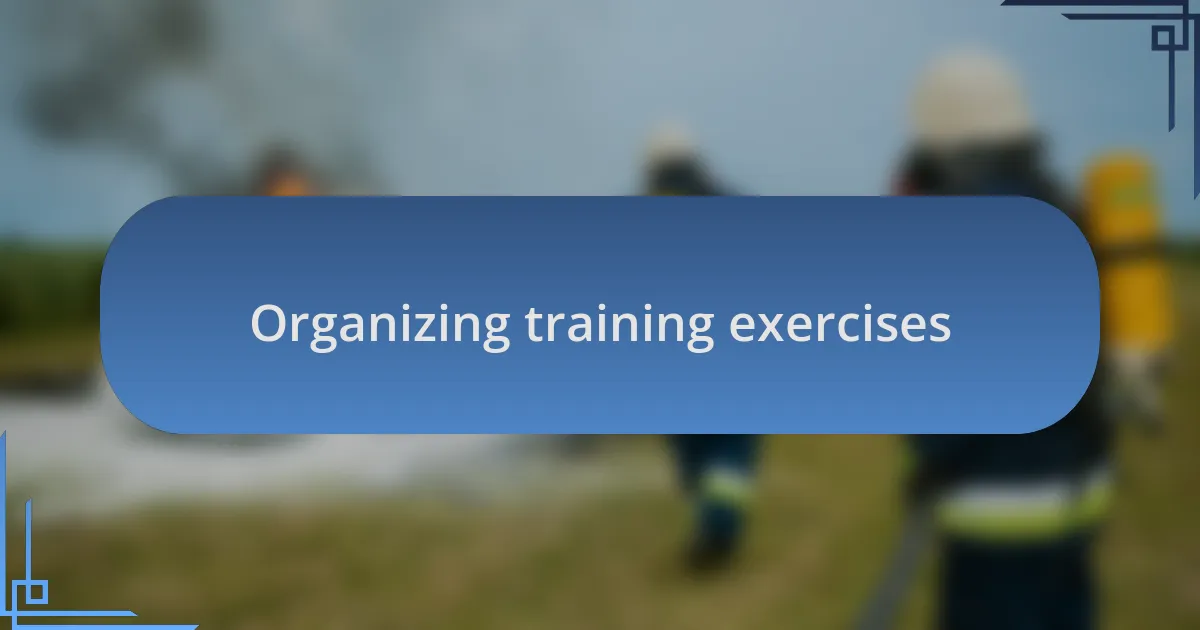
Organizing training exercises
Organizing training exercises is a crucial step in building a cohesive and effective community response team. It requires careful planning to ensure that each exercise meets the specific needs of the team and prepares them for real-life scenarios. I remember when I organized a fire simulation drill; the excitement was palpable, but so was the tension. Planning the scenarios required balancing realism with safety, which I often found is a delicate dance.
One practical approach I’ve adopted is to involve team members in the design of these exercises. During a brainstorming session, I encouraged everyone to share their ideas on what skills they felt needed refinement. To my surprise, one team member proposed a scenario centered on urban search and rescue, a skill we hadn’t fully explored yet. That moment highlighted how empowering others to contribute doesn’t just enhance training; it builds camaraderie and ownership over the team’s success.
After the drills, I always make it a point to hold debriefing sessions. These discussions are invaluable for reflecting on what went well and what could improve. I distinctly remember a session after a challenging exercise where emotions ran high; we were able to share not only our successes but also the mistakes we made. It was in that safe space that we fostered trust and learned from each other. Isn’t it fascinating how these moments of vulnerability bring teams closer together?